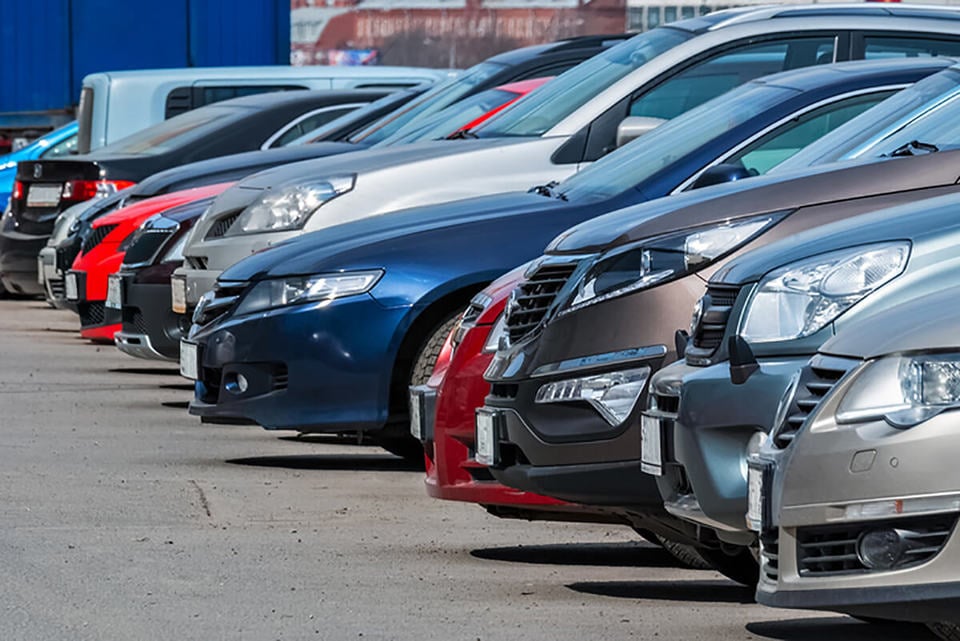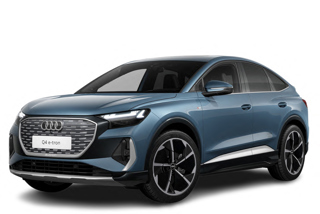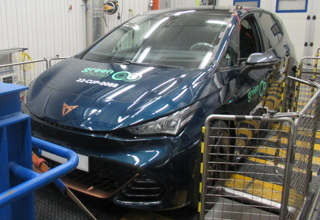The huge potential of reducing a vehicle’s impact on the climate by going electric is being diminished by a growing trend towards larger and heavier plug-in cars, new research suggests.
Green NCAP’s results, published today (Thursday, March 23), show that vehicle size is “significantly” increasing the negative impact on climate and energy demand, driving not only a rise in fuel and electric energy consumption, but also creating a wider footprint in vehicle and battery production.
It tested the Life Cycle Assessment (LCA) of greenhouse gas emissions and primary energy demand of 34 cars in 2022, with different powertrain types: battery electric, hybrid electric, conventional petrol and diesel, and one vehicle, the Ford Puma, that runs on alternative fuel.
The LCA calculations used Green NCAP’s interactive Life Cycle Assessment tool, with calculations based on the average energy mix of the 27 EU Member States and the UK, and an average mileage of 240,000km (150,000 miles) over 16 years.
Green NCAP says the results show the “current and continuous trend” towards larger and heavier cars “significantly increases” the negative impact on climate and energy demand.
It drives not only a rise in fuel and electric energy consumption, but also creates a wider footprint in vehicle and battery production.
LCA results from the 34 tested cars show that battery electric vehicles (BEVs) are ahead in reducing greenhouse gases with 40‑50% less emissions compared to conventional petrol cars, depending on the model chosen.
In terms of primary energy demand, the differences between electric and conventional cars are less.
The hybrid electric sport utility vehicles (SUVs) that were tested, have higher fuel consumption and, due to increased emissions in the usage phase, have life cycle values in the range of 200‑240g CO2-equivalent/km and an estimated 0.85‑1.0 kWh/km.
These numbers lie between the values of a large electric SUV and a conventional petrol- or diesel-powered counterpart.
In the case of the bio-ethanol (E85) operated Ford Puma, compared to the same car in petrol mode, greenhouse gas emissions reduced to a level closer to the range of battery electric cars.
The processes needed for the bio-fuel production increase the Puma’s life cycle energy demand by 57%, yet given 60% of the total energy needed is renewable, much less fossil fuel is used, said Green NCAP.
The calculations show the considerable differences between each car’s impact on the environment, but also reveal the significant influence of mass on greenhouse gas emissions and primary energy demand.
Green NCAP says that this is clearly seen for all powertrain types even though the correlation might be slightly distorted for some cars due to differences in aerodynamic drag or powertrain efficiency.
Nevertheless, it says, the overlying message is clear – the heavier the vehicle, the more harm it does to the environment and the extra energy required to drive the car.
In general, battery electric vehicles emit significantly less greenhouse gases over their lifetime, but some of the gains are lost due to their increased weight.
Aleksandar Damyanov, Green NCAP’s technical manager, explained: “Electric vehicles and electrification in general offer huge potential in reducing greenhouse gases, but the ever-increasing trend of heavier vehicles diminishes this prospect.
“To counteract this, Green NCAP calls on manufacturers to reduce the mass of their products and calls on consumers to make purchasing decisions that not only consider the powertrain of their new cars, but also consider their weight.”
To better illustrate how mass affects environmental performance, Green NCAP has performed additional numerical simulations based on real-world Green NCAP measurements.
These studies show that all three powertrain types (BEV, non-rechargeable hybrid HEV and conventional ICE), when their mass increases, have the same relative rise in energy consumption of about 2% per 100kg.
However, their absolute consumption figures are very different.
Furthermore, higher mass is a major factor in the environmental impact of vehicle production.
Based on today’s estimates, a net mass increase of 100kg potentially results in an additional 500‑650kg of greenhouse gas emissions and 1.9‑2.4 MWh of energy demand in vehicle production (without battery, including recycling).
Growing trend towards heavier vehicles
Over the past ten years, the average weight of vehicles sold has increased by about 9% or around 100kg.
Sales of small SUVs have increased five times, becoming the most sold vehicles in 2022 with about four million cars sold across Europe.
Large SUV sales have further increased seven times leading to a total sales number of roughly 700,000 cars.
For a compact family car, the 100kg average increase in weight is responsible for about 1.4 tonnes of additional greenhouse gas emissions and 5.7 MWh of extra energy used.
According to the European Automobile Manufacturers’ Association (ACEA), in 2022, 9.3 million vehicles were sold, out of which 12.2% were battery electric.
This leads to a revealing calculation – assuming eight million vehicles are on average 100kg heavier, the impact of this weight increase on the climate is the equivalent of about 200,000 extra cars on European roads.
Click here for Green NCAP’s European Life Cycle Assessment results and fact sheets.
























Login to comment
Comments
No comments have been made yet.